I'm studying prototypes right now and think that I'm almost there but I'm a bit confused on one topic.
Let's say we have:
function Animal(name, gender) {
this.name = name;
this.gender = gender;
}
function Cat(species) {
this.species = species;
}
Cat.prototype.color = null;
Cat.prototype = new Animal();
My question is, why is prototype needed at all for new properties?
Why couldn't we do:
Cat.color = null;
EDIT::
All the white blocks are from a uml diagram from another SO post. I added the orange boxes to suit this example that I've provided. Does this diagram I've added to still make sense?
My main problem I believe is that I was making the function constructors and the actual prototype objects too similar when in fact they're completely different things. One's a function and one's an object.
EDIT 2
With this diagram, I'm trying to clarify how the constructor property interacts and what it is exactly connected to, and more specifically, how it affects the use of this. Any comments on the validity would help.

